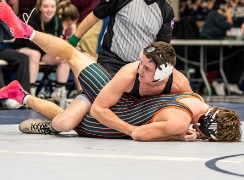1904 train catastrophe at New Market

The train included four coaches, a combination baggage-mail car, three Pullman cars, and 210 passengers, many of whom had attended the St. Louis World’s Fair.
Engineer G.M. “Dick” Parrott and conductor Tom Murphy received their orders at the Strawberry Plains station instructing them to continue on the main track.
Meanwhile Southern Railway Train 15 was leaving Bristol for Knoxville, with three scheduled stops, ultimately picking up 140 passengers along the way.
It was a beautiful day and everyone was excited with their travel. But they would become part of one of the worst railway disasters in our nation’s history. Both trains were scheduled to take the same track while traversing East Tennessee. As was often the case, one of them, Train 15 in this instance, was supposed to stop on a side track at Hodge’s Switch to allow the larger Carolina Special to safely pass.
During a routine stop at Morristown, Train 15 received and signed off on orders to take the New Market side track instead of Hodge’s Switch. After stopping at New Market, the train should have stopped after just a few hundred yards more onto the side track to allow the Carolina Special to pass before resuming to the Knoxville destination.
It did not do so.
A theory in news accounts of the day was that Train 15 engineer Bill Kane and conductor Caldwell decided to make up some lost time by going “full throttle” to the next side track six miles away before meeting the Carolina Special.
His train had only light coaches and a baggage car, which allowed for higher speeds. It became known later that the engineer was eager to see his harness horse race later that day in Knoxville, and that that might have played a part in his rash decision. In any event, Train 15 didn’t stop, and the trains were now on a collision course. It was an accident waiting to happen.
“Urgent! No. 15 has run the switch and is on the main line,” a telegraph operator from the New Market station warned in a message to the Strawberry Plains station.
They wanted to tell the engineer of the Carolina Special that they were on a collision course.
The Special was just departing the station and railroad officials ran outside and began waving and even throwing rocks at the train to get the crew’s attention in order to stop the train. It was no use. Their efforts to stop the train were unsuccessful.
Soon the two trains sped toward each other down the mainline of the Southern Railway track between 60 and 70 mph.
Time was running out. The communications options that are in use today weren’t available in that era.
There was one last chance to warn the trains: A telegram was sent to Hodge’s Switch, the normal passing place, but no one was on duty and the message was never received.
Since they were speeding toward each other at a combined speed of well over 100 mph, a calamity awaited them ahead.
Train 15 “was barreling down the steep grades” to what was known in railroad parlance as a “dip.” A blind curve lay just ahead, making matters even worse.
Both train engineers caught sight of the other train at Whitaker’s Farm, and the emergency brakes were immediately applied. It was too late.
Both were traveling at far too great a speed to stop or to slow down but very little. They slammed together head-on, on New Market Hill, at 10:18 a.m.
Author’s note; Jadon is a widely read Appalachian writer from Harrogate, TN. Thanks to Lincoln Memorial University, Alice Lloyd College and the Museum of Appalachia for their assistance.

